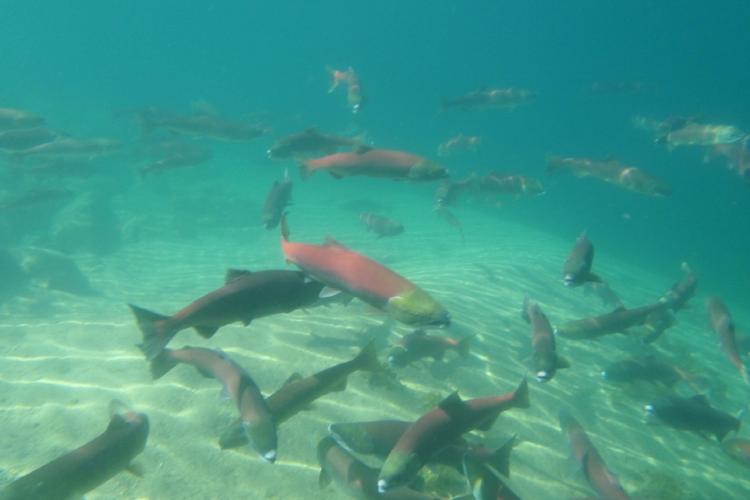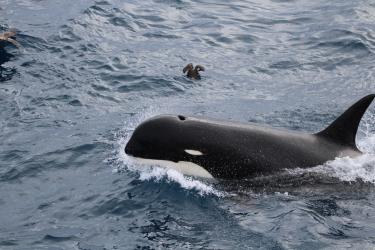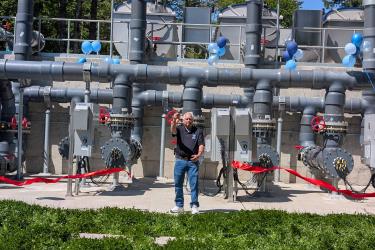Hatcheries now produce most Pacific Northwest salmon. We look at hatchery effects on natural salmon populations. We determine the effectiveness of hatcheries in rescuing, rebuilding, and maintaining genetic diversity in some of the nation’s most depleted salmon stocks, including the Redfish Lake sockeye salmon.
We apply behavioral and ecological assessments to understand how hatcheries:
- Alter salmon development.
- Contribute to domestication selection and fitness loss.
- Influence ecological interactions with wild salmon during freshwater and marine migrations and on the spawning grounds.
- Affect ESA recovery efforts.
A collaborative research approach relies on interaction with scientists and management professionals across state, federal, tribal, and local governments and universities and non-governmental organizations. Research on rearing technologies extends to marine finfish, native shellfish to support environmentally responsible restoration, and commercial aquaculture.
We use unique behavior laboratories, stream mesocosms, and large land-based seawater and freshwater rearing systems. Research ranges from short-term behavioral trials to multi-generation, before-after-control impact experiments, replicated among multiple watersheds. Long-term studies of the migration behavior and survival of salmon and steelhead in the Salish Sea provide quantitative estimates of early marine survival and evaluate ecosystem factors (including forage fish abundance, predation, and hatchery inputs) on their marine productivity.
Our research includes the following projects:
- Optimizing marine finfish larviculture.
- Captive rearing of Pacific salmon and steelhead.
- Improving hatchery rearing methods for steelhead.
- Conservation hatchery effectiveness.
- Marine ecology and survival of steelhead.
Contact
Dr. Barry Berejikian, Program Manager





